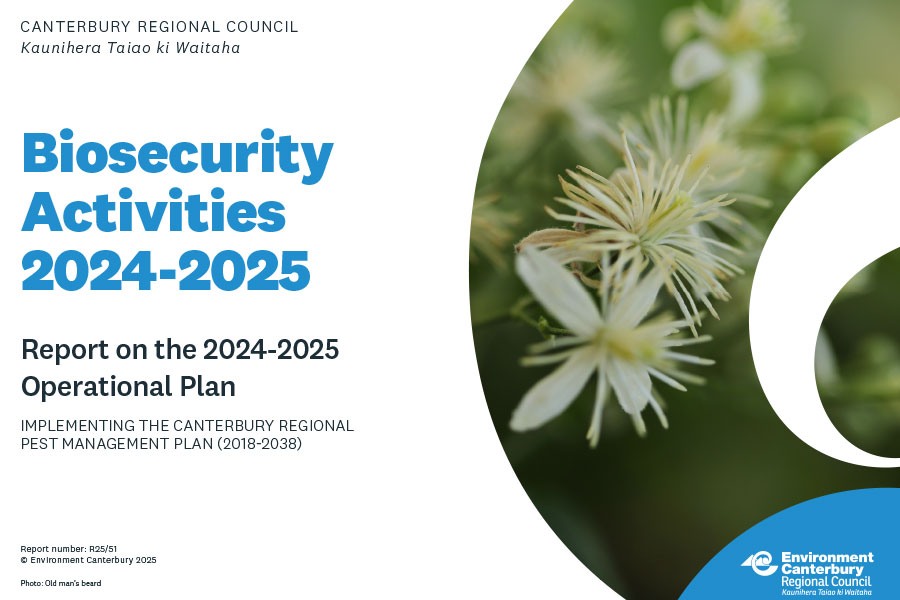Before we have a serious problem on our hands, we’re cracking down on invasive crack willow near Lake Coleridge/Whakamatau.
Implementing the pest management plan
Our Operational Plan and Biosecurity Activities Report outline how we manage pests in Waitaha Canterbury.
These documents set out our responsibilities, actions, service levels, and budget, all aligned with the Canterbury Regional Pest Management Plan (2018–2038). Together, they turn long-term strategy into practical steps and show the progress we’re making.
Operational Plan 2025-26
The Operational Plan for 2025–26 sets out how we will deliver the Canterbury Regional Pest Management Plan (CRPMP) over the coming year.
It details who is responsible for:
- pest control
- the key activities and measures we’ll use
- the service levels we aim to achieve
- the planned expenditure for pest management.
This plan turns the long-term strategy of the CRPMP into practical actions for the year ahead.
Biosecurity Activities Report 2024-25
The Biosecurity Activities Report 2024-25 provides a detailed review of how we performed against last year's Operational Plan under the Canterbury Regional Pest Management Plan (CRPMP).
It shows:
-
whether we met our targets
-
what measures were implemented
-
how these contributed to the CRPMP objectives.
The report provides transparency on our progress and demonstrates the impact of our pest management work across the region.


